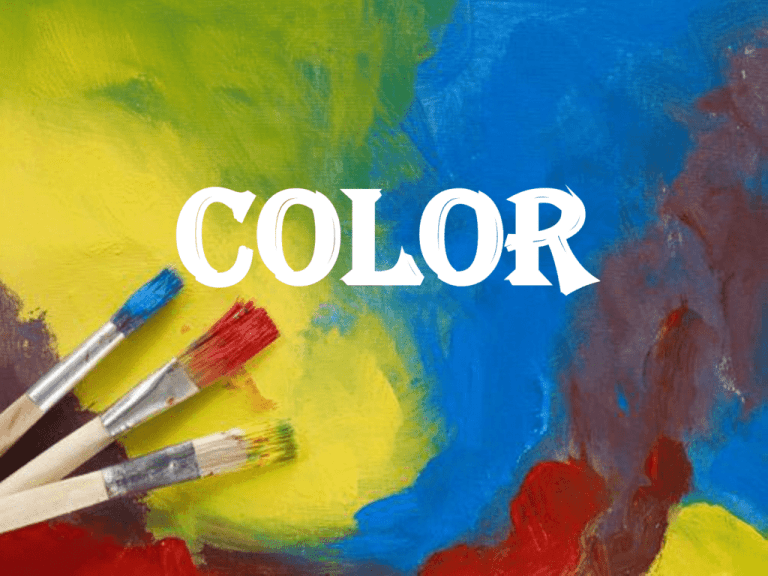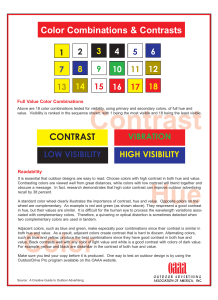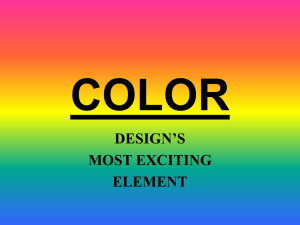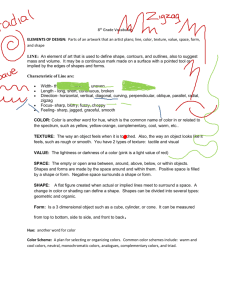COLOR PowerPoint
advertisement

COLOR Color An element of art that is derived from reflected light Color Spectrum When light passes through a wedge shaped glass, called a prism, the beam of white light is bent and separated into bands of color Hue The Name of color in the color spectrum HUE RED HUE HUE YELLOW BLUE Primary Colors YELLOW BLUE RED Cannot be made Secondary Colors GREEN ORANGE VIOLET Made from mixing primary colors Intermediate Colors YELLOW-GREEN BLUE-GREEN BLUE-VIOLET YELLOW-ORANGE RED-ORANGE RED-VIOLET Made from mixing a primary color with a secondary color Color Wheel The spectrum bent into a circle Other Color Systems… RYB Pigment (paint, colored pencils) Other Color Systems… RGB Light (stars, stage lights, TV screens) Other Color Systems… CMYK Pigment (graphics, inks) Value The art element that describes the darkness or lightness of a color Tints – A light value of a hue Shades – A dark value of a hue Intensity The brightness or dullness of a color High Intensity vivid strong Low Intensity fair medium weak Complementary Colors Colors opposite each other on the color wheel blue orange red green yellow violet Complementary Colors Mixing a hue with its compliment: • Lowers its intensity • Is how we get NEUTRAL COLORS Color Schemes Monochrome means one color Monochromatic color scheme: A color scheme that uses only one hue plus the tints and shades of that hue. Effect: Unifying Analogous Colors Analogous color scheme • Colors that sit side by side on the color wheel AND have a common hue. • Effect: Helps tie in one shape to the next through a common color so it unifies with more variety. Analogous Color Scheme Edward Hopper - Compartment C, Car 293 Complementary Colors • Colors that are opposite of each other on the color wheel. • Effect: exciting, loud, eye catching Complementary Color Scheme Vincent van Gogh - Noon: Rest From Work Color Triads Primary Secondary • Composed of three colors spaced equally apart on the color wheel. • Effect: The contrast is not as strong as that between complements Color Triads Split Complements • The combination of one hue plus the hues on each side of its compliment. • Effect: has less contrast, but more variety than straight complements. Split Complements Warm/Cool Colors • Reds, Oranges, and yellows • Usually associated with Sunshine or fire. • Warm colors move towards the viewer. • • • Blues, greens, and violets Usually associated with water, ice/snow, or grass. Cool colors seem to recede or move away Warm & Cool Optical Color • Colors that result when a true color is affected by unusual lighting or its surroundings. • Colors as we see them. Arbitrary Color • • Color chosen by personal preference. Artists choose arbitrary colors rather than optical colors because they want to use color to express meaning, feelings, and moods. Also, the create certain effects.








